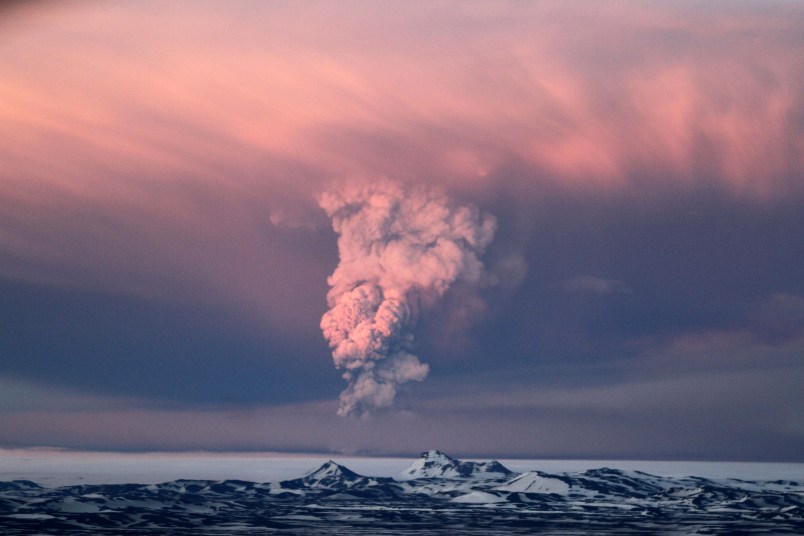REYKJAVIK, Iceland (AP) — Iceland raised its aviation alert to red Saturday as a subglacial eruption began at the restless Bardarbunga volcano, which has been rattled by thousands of earthquakes in the past week, the country’s Meteorological Office said.
Seismic data indicated that lava from the volcano was melting ice beneath the Vatnajokull glacier, Iceland’s largest, Met Office vulcanologist Melissa Pfeffer said.
She said it was not clear when, or if, the eruption would melt through the ice — which is between 100 to 400 meters (330 to 1,300 feet) thick — and send steam and ash into the air.
The eruption led Iceland to raise its aviation alert level to red, indicating an eruption that could cause “significant emission of ash into the atmosphere.” Red is the highest alert warning on a five-point scale.
Aviation authorities declared a no-fly zone around the volcano but did not shut Icelandic airspace.
Pfeffer said scientists were flying over the glacier Saturday to look for changes on its surface. Scientists were also monitoring a hydrological station downstream from the volcano for flooding — a common result of volcanic eruptions in Iceland.
Authorities evacuated several hundred people earlier this week from the highlands north of the Vatnajokull glacier as a precaution. The remote area, 200 miles (320 kilometers) east of Reykjavik, is uninhabited but popular with hikers.
Iceland sits on a volcanic hot spot in the Atlantic’s mid-oceanic ridge and eruptions occur frequently, triggered when the Earth’s plates move and when magma from deep underground pushes its way to the surface.
A 2010 eruption of Iceland’s Eyjafjallajokul volcano produced an ash cloud that caused a week of international aviation chaos, with more than 100,000 flights cancelled. Aviation regulators since have reformed policies about flying through ash, so a new eruption would be unlikely to cause that much disruption.
Pfeffer said the amount of ash produced would depend on the thickness of the ice.
“The thicker the ice, the more water there is, the more explosive it will be and the more ash-rich the eruption will be,” she said.
___
Online:
Icelandic Meteorological Office: http://en.vedur.is/
Copyright 2014 The Associated Press. All rights reserved. This material may not be published, broadcast, rewritten or redistributed.



